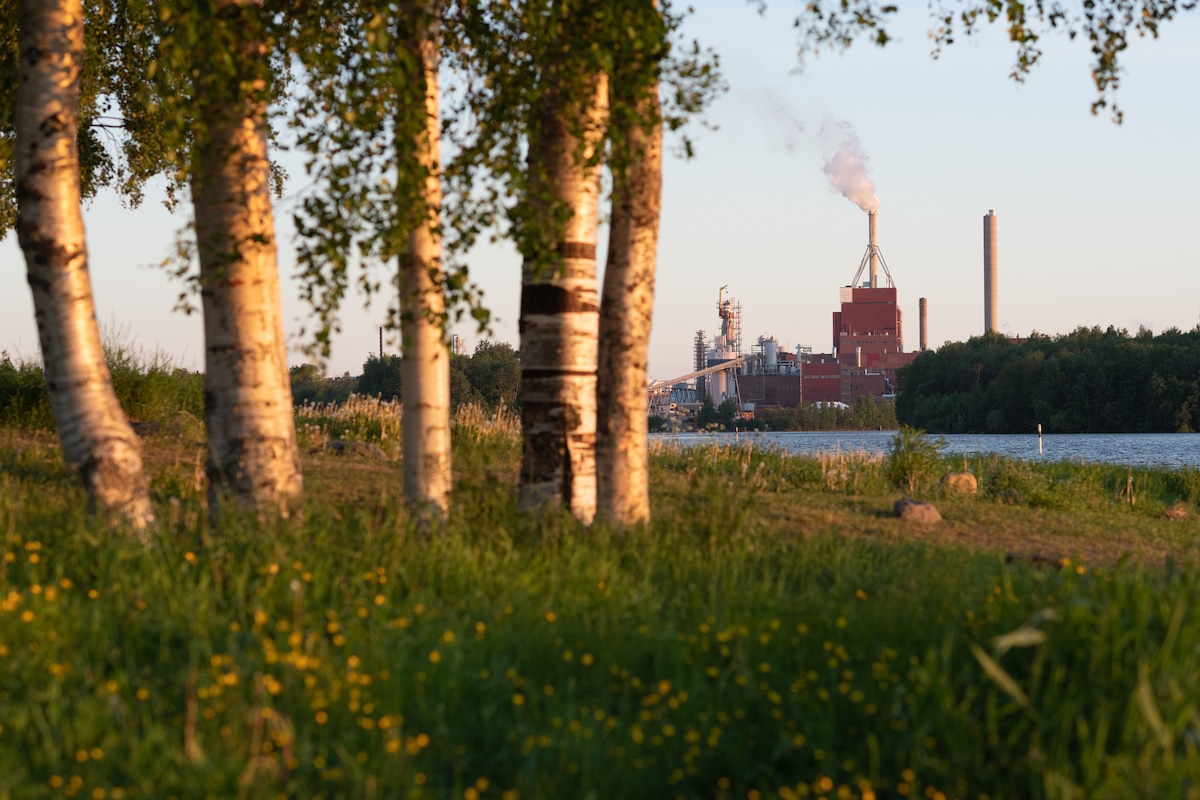Products You May Like
Birch trees near a power plant in Finland. Split Second Stock / iStock / Getty Images Plus
 Why you can trust us
Why you can trust us
Founded in 2005 as an Ohio-based environmental newspaper, EcoWatch is a digital platform dedicated to publishing quality, science-based content on environmental issues, causes, and solutions.
If you live in a polluted neighborhood, allergy season could be worse for you.
A new study published in PLOS ONE Wednesday found that silver birch trees growing in more polluted areas of Poland had higher levels of the allergen Bet v1.
“This research aligns with previous studies that have found that levels of allergic rhinitis are higher in urban populations than in less polluted areas and that there is a correlation between carbon emissions and an increase in airborne pollen, and increased allergenicity of the pollen itself,” acting head of clinical services at Allergy UK Margaret Kelman — who was not involved with the study — told The Guardian of the results.
To reach their conclusion, the Krakow, Poland-based research team tested silver birch trees in seven locations in the southern Polish region of Malopolska. Three of the testing sites were in Krakow and all were exposed to different levels of air pollution. They were also all located near air quality monitoring stations. This allowed the researchers to also measure levels of nitrogen oxides and particulate matter 10 and 2.5 between 2017 and 2019.
“Mean Bet v1 concentration measured in pollen samples collected within the study in Kraków… was significantly higher than in less polluted places,” the study authors found.
More From EcoWatch
Why would this be the case? When trees and other plants are exposed to pollution, it can trigger the release of “stress proteins” like Bet v1 in silver birch trees.
“We found that urbanisation and air pollution can influence the functions of proteins by changing their structure. This can lead to an increase in their allergenicity and to more frequent incidence of allergies in sensitised individuals,” study co-author Monika Ziemianin of Jagiellonian University Medical College in Poland told iNews.
The study authors also offered advice to doctors and urban planners based on their findings. First, doctors should consider the pollution levels a patient may be exposed to.
“The results may explain the failures in the treatment of people with pollen allergy, living in polluted areas,” Ziemianin told iNews. “Moreover, when greenery in the cities is planned, allergenic trees should not be planted, because they produce more stress proteins of a higher potential allergenicity,” she added.
Birch tree pollen is a common allergen, impacting 6.4 to 22.4 percent of Europeans, according to the study. It causes symptoms in 25 percent of people who suffer from hay fever in the UK, according to AllergyUK, and a third of U.S. allergy sufferers are sensitive to it, according to allergy treatment company Klarify. However, the findings could also hold true for other allergen-producing trees including alder, other birches, hazel and horse chestnut, according to iNews. In the U.S., tree pollen season usually lasts from February to May, but may begin as early as January for some species, according to the Asthma and Allergy Foundation of America.
The study builds on a growing body of evidence linking human activity to worsening allergy seasons. For one thing, pollen can stick to particulate matter pollution, which keeps it in the air for longer and gives it a greater chance to enter our bodies via our ears, nose or mouth, as iNews explained. For another, greenhouse gas emissions responsible for the climate crisis can make allergies worse in at least two ways.
One has to do with carbon dioxide pollution itself.
“Urbanisation and air pollution increase the amount of carbon dioxide in the atmosphere, which has a negative effect on the immune system’s ability to fight infection and can contribute to worsening symptoms of allergy,” Kelman told iNews.
The other is that global warming may be making pollen seasons last longer. In the U.S., for example, pollen season starts 20 days earlier than it did in the 1990s.
Subscribe to get exclusive updates in our daily newsletter!
By signing up, you agree to the Terms of Use and Privacy Policy & to receive electronic communications from EcoWatch Media Group, which may include marketing promotions, advertisements and sponsored content.
